One of the biggest goals in the fitness industry is building muscle. After all, who doesn’t want to be (and look) stronger?
It’s also one of the most hotly debated subjects. How do you most effectively build muscle? How much weight do you need to lift? What about nutrition? And how do we do all this naturally, without stimulants?

Relax. We dove deep into the science behind building muscle fast and naturally. Read through this definitive guide for all the answers you need.
The Fundamentals of Muscle Building
We’ll dig deeper into these concepts throughout the article. For now, here’s a brief overview.
Train (Hard)

This should go without saying, but we’re saying it anyway: to build muscle, you have to train. Hard.
Incorporate at least three days per week of strength training into your routine. Prioritize compound exercises like squats and deadlifts.
A compound exercise is one that works multiple muscle groups at once. For example, while most people count squats as a glute exercise only, they’re actually compound.
When done correctly, squats work your glutes, hamstrings, quads, and calves. If you’re using a barbell across your back (as opposed to dumbbells), you’re also working your core and upper back.
We’ll dig more into compound exercises below. Stay tuned.
Isolation exercises are ones that use only one muscle group, and they have their place in a well-rounded routine as well. Think traditional bicep curls or calf raises.
Eat Enough (Consistently)
When your goal is weight loss, you need to be in a caloric deficit. That means eating fewer calories per day than you burn, so your body taps into stored energy sources in the body (fat) to make up the deficit.
To build muscle, however, you need to be in a caloric surplus. That means eating more calories than you burn during the day.
Why? Because the act of training your muscles creates microscopic tears in them. Then, on recovery days, your body uses calories to repair those tears.
If your body doesn’t have enough calories, the tears don’t get repaired, and you don’t build muscle. See our detailed nutrition section below for more information.
Recover (Yes, Relax)

Your recovery days are just as vital as your training days. You may think that feeling of tiredness or soreness on your training days or the ones after is a sign that your body is building muscle. It isn’t.
That soreness is indicative of those muscle tears we mentioned earlier. The next day, when you feel ready to lift heavy again, is when the repairs are actually happening.
You have to give your body at least one day between training the same muscle groups. If you don’t give it enough time to repair, you again don’t build the muscle you’re looking for.
So take a day off. Or vary the muscle groups you train. That means yes, you can do leg day on Monday and go right back to the gym on Tuesday to train your arms. Just don’t do legs back-to-back.
Repeat (Consistently. Notice a pattern?)
No exercise regimen can succeed if you don’t stick with it. It can take up to eight weeks for beginners to notice new muscle growth. So don’t give up after just one month.
You have to train hard at least three days per week, eat enough calories every day, and rest your muscles between workouts, and you have to do it regularly.
Consistency is key to results in exercise, as in so much of life.
So, How Do You Gain Muscle?
Alright, you’ve got a high-level overview of how to pack on that muscle. Let’s dig deeper. This section will discuss step-by-step, actionable ways you can build muscle fast and naturally. We’ll cover everything from goal setting to how many reps to your nutrition so you can maximize your fitness routine.
Set Your Goal (But Keep It Real)
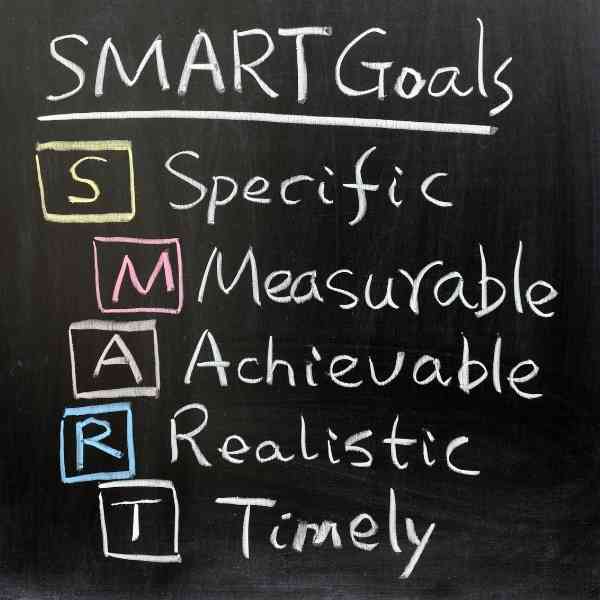
This is possibly the most crucial step. Yes, even more important than balancing your macros (more on that later) or how heavy you should be lifting. Without a clear goal in mind, your training regimen will be unfocused at best and ineffective at worst.
So set that goal. The key here is to make it a SMART goal (you’ve heard of those by now, yes?). One of the most essential parts of a SMART goal is the R: keeping it realistic.
In case you forgot, SMART goals are Specific, Measurable, Actionable, Realistic, and Time-based. Let’s look at what that means for building muscle.
Specific
You can’t just say, “I want to look leaner” or “I want to look like Arnold Schwarzenegger.” You have to drill down and get really specific on exactly what you want from your training program.
Are you after reducing your body fat percentage by 5%? Or, maybe you want to be able to squat 200 pounds? Perhaps you want to be able to do 20 pull-ups in a row?
The more specific you get, the more focused you’ll be. Plus, you’re more likely to keep up that all-important consistency if you have a clear end game.
Measurable
This sort of goes hand-in-hand with specific but is more about how you’ll track your progress. Will you use an app to monitor nutrition or keep track of how much you’re lifting? Will you write down how many pull-ups you’re able to do? Will you set a regular schedule of coaching sessions with a personal trainer to measure your body fat to muscle ratio?
Whatever you choose, make sure you have a solid system in place to measure your progress. This is essential for knowing when you’ve reached your goal and need to move the posts.
Actionable
Making sure your goal is actionable means you have the means to reach it. Don’t set your goal to be able to swim 20 laps a day if you don’t have access to a pool. Don’t make your goal to lose 100 pounds if you don’t have it to spare.
Instead, set a goal that you have the means to achieve. If you have access to a full home gym, for example, go ahead and set that goal to be squatting heavy.
Realistic
Arguably the most important of the bunch, your goal must be realistic. You can’t go from couch potato to ripped in a month. You also are unlikely to wind up looking like a bodybuilder in the end. (They have supplements and very strict nutritional habits that aren’t feasible for everyday humans.)
Your goal must be realistic, or you’ll never achieve it. Unrealistic goals hamper results. The key is to keep it balanced. Your goal needs to be far enough away to challenge you but not so far as to be impossible.
Time-Sensitive
Wrapping it all together is to make your goal time-sensitive. This is another area to keep it real. Again, you can’t go from couch potato to a lean, mean lifting machine in a month.
However, do set yourself a deadline. Otherwise, you won’t have as much motivation to strive to make your goal happen. Bonus points if you tell other people about your fitness goal and when you hope to achieve it. They can help keep you accountable.
Lift Heavy Weight
Okay, you’ve got a solid SMART goal or two written down somewhere. Now, telling you to lift heavy weight may seem like a “no duh” moment. Of course, you have to lift weights to build muscle. But we’re going to dig into exactly how much and the science behind muscle building.
When you exercise your muscles, you are technically damaging them. It’s those microscopic tears we mentioned earlier. This damage causes your body to activate what’s called satellite cells. These cells fuse together to replace the damaged tissue, thus adding to your muscle size in a process called hypertrophy.
Thus, the heavier you lift, the more damage you’re doing to your muscles, and the more they’ll build themselves back up. Think only being able to do 2–3 sets of 6–8 reps of the exercise before you tap out (more on reps below).
Then, Lift Even Heavier
When building muscle, you need to utilize the concept of progressive overload. The science behind that is basically exactly like it sounds: placing greater and greater stress upon the body/your muscles. This means you need to be continually lifting heavier in order to progress to your desired goal.
As you progress, your body will adapt to the weight. For example, if you started deadlifting at 90 pounds, your body will eventually lift that with ease. Then you have to add weight. Eventually, again, your body will get stronger and adapt, and you’ll lift the next level with ease, and so on.
Progressive overload also means you should vary the frequency and duration of your workouts. If your body adapts to doing the same six moves three times a week, you’ll start to plateau. Develop a workout program that changes movements and length of time to keep your muscles continuously activated.
Do the Right Amount of Reps
When lifting weights, there’s something called your one-repetition maximum (1RM). This is the amount of weight you could lift for only a single rep before you’d have to stop.
Doing one rep of something isn’t enough to build muscle, however. But take this number and do some math, and you’ve got a better idea.
Beginners need to be lifting about 60% of their one-rep max. That’s roughly a weight you could lift for 15–20 times in one complete set. Intermediate lifters need to bump this up to 80%, which is a weight you could lift about 8 times in a set. Advanced lifters who have been lifting for years may need to bump that all the way up to 85 or 90%.
For example, if you estimate you could deadlift 125 pounds only once, and you’re a beginner, you should be doing about three sets of 6–8 reps with 75 pounds to begin. If that’s too easy, next workout, try heavier. But you should always be aiming for that three sets of 6–8 reps for each exercise.
Work on Your Mind-Muscle Connection
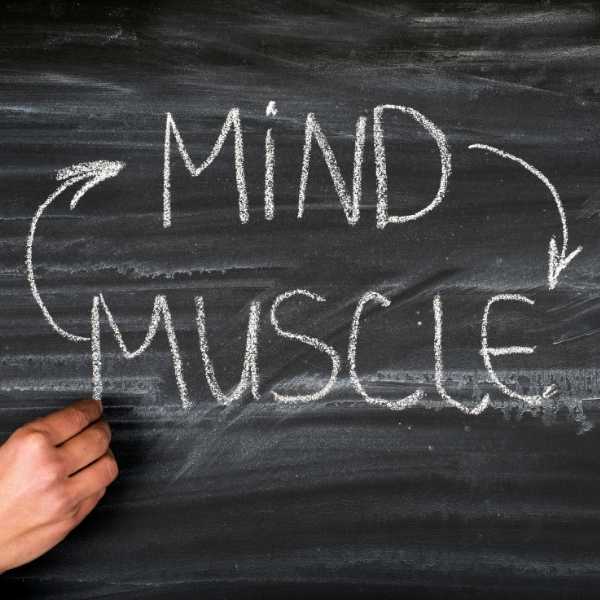
I know, I know, the title might sound too “zenny” for you, but chill, I’m not taking it there.
Your mind-muscle connection is the conscious, deliberate contracting of your muscles. Now you’d think it would be common sense to focus on the muscle group you’re training during an exercise. However, distractions are also a lot more common than you’d think.
How many times do you see people watching television or chatting with a friend as they lift? Studies have shown that if you focus and deliberately contract the targeted muscle, you gain greater hypertrophy (maximum gain in muscle size).
So as you’re lifting, try to focus less on what the exercise you’re currently doing looks like. Proper form is vital to help prevent injury (more on that later), but if you’re figuratively flexing for attention in the gym as you’re literally flexing during the workout, you’re not activating as many muscle fibers.
Turn off the television, ask your friend to stay quiet for a minute, or stop listening to that podcast. Instead, really focus on how your muscles feel during the movement.
Focus on Compound Exercises
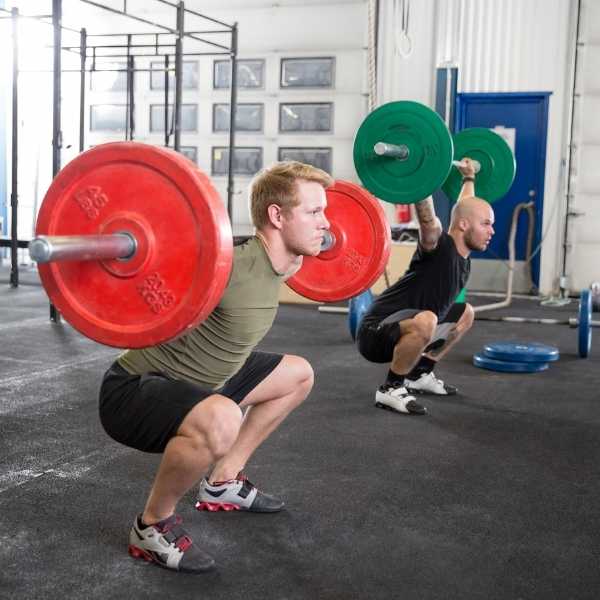
Remember compound exercises we mentioned earlier? Focus on these in your workouts for maximum muscle gain. Because compound exercises work multiple muscle groups simultaneously, you’re building more muscle with less effort.
For example, say you want to strengthen your glutes. Focus on squats, deadlifts, and hip thrusts. Each of these is a compound exercise that uses not only your glutes but also your hamstrings, calves, and core.
There are four main groups of compound exercises:
- The pull: works the back muscles of the rhomboids, lower traps, latissimus dorsi, and your biceps
- The push: works the chest muscles of your pecs, shoulders, and triceps
- Hip extension: works the glutes, hamstrings, and lower back
- Knee flexion: works the quads and adductors
There are dozens of exercises you can do to include each of the four main groups. Some of the biggest ones are:
- To work the pull: rows, chin-ups/pull-ups, lat pulldowns, face pulls, etc.
- To work the push: bench press, push-ups, overhead presses, tricep dips, etc.
- To work the hip extension: deadlift (and all its variations), kettlebell swings, cable pull-throughs, etc.
- To work the knee flexion: squats, step-ups, reverse lunges, thrusters, etc.
Varying which compound exercises you do not only gets you the most efficient workout possible, but it also helps with progressive overload.
But wait, you may be saying, what about abs? Well, first of all, it’s very true that your abs are made in the kitchen, and we’ll be digging into nutrition later on. Second, here are a few compound exercises you can do to work your core:
- Leg raises/lowers
- Plank variations
- Weighted carries
- Reverse crunches
And on the Eccentric Phase
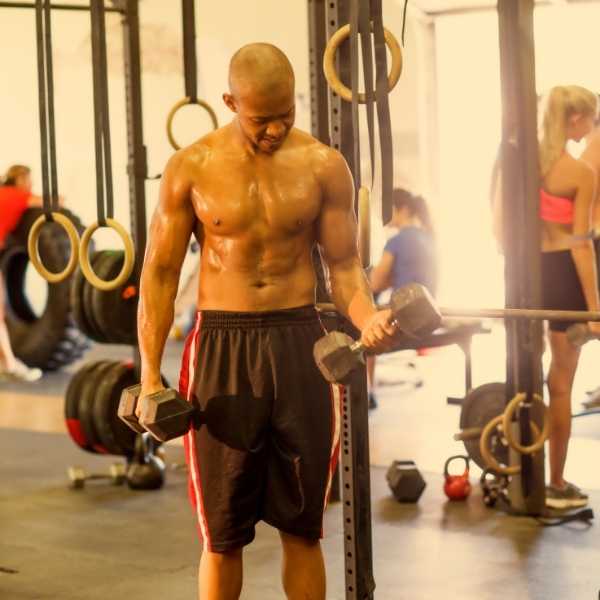
There are two phases to every exercise: concentric and eccentric. The concentric is the movement when you’re shortening the muscle fibers. This is when you’re lifting the weight in a bicep curl or driving back up from your squat.
The eccentric phase is when you’re lengthening the muscle. This is when you’re lowering the weight down in your curl or sitting down into your squat.
Studies have shown if you slow down and put more focus on the eccentric phase of your workout, you’ll build more muscle. This is because lengthening the muscle puts more strain on the muscle spindles. These spindles are stretch receptors. When you put more strain on them, it activates the nerves connecting to the muscles, leading to increased muscle fibers’ contraction.
Activating more muscle fibers means you’re building more muscle. So slow down on your eccentric movements and focus on that phase. You can also pause in the middle of the movement to add an isometric (static) aspect to your exercise.
Use Free Weights and Barbells
Weight machines in the gym have their place; usually, they’re good for dialing in spot training a specific muscle. However, don’t overlook the dumbbells and barbells. They’re actually more useful for building muscle than machines.
You usually need multiple machines to get a complete workout. However, you can do practically any exercise with free weights. They allow you a full range of motion, meaning the exercises you’re doing are more functional.
Free weights also help you activate all the helper and stabilizer muscles essential for proper form and daily life. If you’re seated at the overhead press machine, for example, you’re not engaging your legs, knees, ankles, or feet. You’re also likely to not engage your core as much as you should be.
Doing overhead presses with free weights, on the other hand, uses all those tiny muscles. Plus, you’re forced to pay attention to your core and keep it tight. This makes free weights and barbells a more efficient option for building muscle. After all, that’s why you’re here, right?
Master the Proper Form

Okay, it’s time to talk about proper form. Remember earlier when we mentioned using proper form is vital to preventing injury? We’re saying it again. You must master proper form for every exercise in your routine.
For example, proper deadlift form—especially when you’re lifting heavy, as you should be—helps protect your lower back from injury. This includes keeping your core braced, your lats engaged and pushing down into your legs to lift the bar (instead of pulling it up off the floor).
Proper form also ensures you’re getting the most out of every single lift. If you’re not doing the move properly, chances are you’re not working the muscle you’re trying to build.
Let’s go back to the deadlift. With improper form, you’re more likely to over engage your back or quads rather than your glutes and hamstrings as intended. This will delay your muscle gain or even plateau it entirely.
Consider at least a session or two with a personal trainer so they can give you specific feedback on your form. Watching yourself in a mirror helps, but they can see every angle. Once you successfully and consistently lift with proper form, then you can rely on the mirror.
Mastering the form also helps with your mind-body connection. The more you focus on proper form, the more you’re focusing on the movement and your muscles. It’s a win-win.
Eat. Eat. And Maybe Eat Some More.
We’ll dig deep into nutrition later on in this article. However, it’s important to emphasize the absolutely vital role your meals play in your training.
Remember how muscle builds? You’re creating all those microscopic tears that need to fix themselves. They can’t rebuild those tears without fuel.
So while you definitely shouldn’t eat whatever you want without a care just to pack in the calories, you need to be in a caloric surplus to build muscle. And the types of calories matter. See the nutrition section for more detailed information.
Train Enough Times Per Week
We already talked about your sets and reps. Now let’s talk about how many times per week you should be training for maximum muscle gains.
Strength train no less than two days per week. Three or four is ideal. Remember to alternate your training days and/or the muscles you’re working to allow for adequate repair and recovery time.
If you train four times per week, you can usually incorporate “days” into your routine, i.e., leg day, chest day, etc. If you’re only training two days per week, you need to make them full-body routines to see muscle growth and progress.
But Allow Your Body to Recover
There are three different types of recovery. Immediate recovery actually occurs during the workout. For example, when running, your body is actually sending energy reserves to each leg between strides.
Short-term recovery is the rest you take between sets. Long-term recovery is the rest you take between your workout days.
Long-term recovery is the most important. Remember how muscle is built through repairing tears in the tissue? Most of that repair happens on your rest days.
While your muscles get to work repairing themselves right away, the real work happens in the 24–48 hours after your workout. If you retrain the same muscles without rest, they don’t have adequate time to repair, and you don’t make progress. So prioritize your rest days and balance them with your three times per week training program.
What about sore muscles? Delayed action muscle soreness, or DOMS, is the sore feeling you experience in your muscles the day or two after a solid workout. It’s caused by those tears in your tissue getting repaired.
DOMS is different from acute muscle soreness, which occurs during and immediately after the workout and goes away quickly. DOMS is a lingering, intense soreness that can interfere with your next program.
That’s partly why it’s so important to rest between heavy lifting days. If you’re experiencing DOMS, you won’t be able to exercise that muscle again immediately. It needs time to repair itself and get stronger.
If you lifted too heavy, used improper form, or didn’t warm up before your workout, you’re at risk for DOMS. To help treat the soreness, apply an ice pack, try a massage, or use over-the-counter pain medication (if able).
Pack on the Protein

Again, we’ll dig deeper into nutrition and protein later on in the article. However, as a general guide, consuming protein helps fuel muscle protein synthesis, aka building muscle tissue. The amount of protein each person needs to build muscle fast and naturally will vary. Genetics, the training program, gender, and more will all influence how much protein you should be consuming.
As a general rule, the fitness world recommends consuming 1.2–1.7 grams of protein per kilogram (0.5–0.8 pounds) of body weight per day. For example, if you weigh 175 pounds (79.3 kilograms), you would consume 95–134 grams of protein per day.
Consume at least 20 grams of high-quality protein within 45 minutes to one hour of your training session for maximum muscle gain. Read the nutrition section for more detail and examples of high-quality protein to include in your diet.
Use Supplements if You Need a Boost
Supplements can play a useful role in muscle building, especially if you have specific dietary needs or hit a plateau. High-quality whey or vegetarian protein, creatine, or branched-chain amino acids (BCAAs) are all examples of supplements you can add to your diet.
Creatine is a substance made from amino acids within our bodies. Amino acids are the chemical building blocks of protein. While most bodies produce enough creatine, adding a supplement can help if you hit a strength plateau. Creatine works by producing adenosine triphosphate, a high-energy compound released during exercise. This compound helps promote protein manufacturing.
BCAAs are three of the nine essential amino acids your body needs for protein synthesis. Studies have shown that taking BCAAs, often contained in workout-specific protein powders, can increase the rate of protein synthesis in your body.
It’s important to make sure you’re not using these supplements to replace balanced nutrition. Most people can get the nutrients they need from a balanced diet of healthful foods.
However, if you find you’re not getting adequate protein or your recovery is taking longer than you’d like, do your research to find the most effective, science-backed supplements (after running it by your doctor) and see if they help.
Reduce Your Cardio Sessions

Cardio is an essential part of any training program. It’s also just good practice to keep your heart and cardiovascular system healthy. However, if your goal is to build muscle, you need to reduce your cardio sessions. (Reduce, not stop completely.)
Strength training causes a decrease in mitochondrial density, a critical factor in your aerobic endurance capacity.
Cardio causes a decrease in maximum power and in the formation of fast-twitch muscle fibers.
Fast-twitch muscle fibers are the ones most activated during a lifting session.
So cardio and strength training, while both have very positive results in your body, work differently and can interfere with each other.
Especially when done on the same day.
Reduce your cardio sessions to twice per week on the days you aren’t lifting.
Focus on a balance of aerobic and anaerobic cardio. Aerobic exercise is usually steady-state, like going for a run or bicycling. Anaerobic exercise is usually done in intervals, like high-intensity interval training (HIIT). That’s when you push yourself as hard as you can for a certain amount of time, then rest for a shorter amount of time, and repeat.
Balancing these two types of cardio will keep you healthy without interfering with your ability to build muscle.
How Long Does it Take to Gain Muscle?

This is one of the most popular questions people ask when trying to build muscle.
The answer, like so much in the fitness world, is: it depends on a variety of factors.
In general, new lifters can expect to see muscle growth at about eight weeks. Experienced lifters will need a bit longer, as they already have the muscle, to begin with.
Your Body
Your age, gender, previous activity level, and body composition will all influence how long it takes you to put on muscle. Older folks will have a harder time than younger ones. People who weren’t physically active will see muscle more quickly than someone who’s been working out for years.
Where your body stores fat will also affect how long it takes you to notice gains.
For example, women tend to carry their fat in their hips and thighs, whereas men tend to carry it around their midsection.
Because that’s where your body wants to store fat, this means you have to work harder to see progress in those areas.
Your Program
How you balance your workout program will affect how long it takes to build muscle. If you don’t have a SMART goal, do too much cardio, or don’t eat adequately, it will take you longer.
That’s why it’s a good idea to have at least one or two sessions with a personal trainer. They can not only help you with form but also help you craft a program that’s maximized for results.
Your Commitment
Remember, in the beginning, how we said consistency is key to this? If you’re not training regularly, consistently eating right, and following your program, it will take longer to see results.
Now, that’s not to say you can never eat something that’s not in your planned diet, or you can never miss a workout. Life happens. It’s busy and complicated and can get in the way. The key is to not let it become a habit.
If you miss a workout, try and do it later in the week or change your plans for next week. If you want to eat something delicious but that’s not in your planned meals every once in a while, go for it. As long as you’re showing up at least 80–90% of the time, you’ll make decent progress.
Why Am I Struggling to Pack on Muscles?

You’re consistent with your program and diet. You’re lifting heavy, incorporating the concepts of progressive overload, and keeping your routine varied and fresh. And yet, you’re struggling to see muscle growth. What gives?
There are a few things that may be happening:
- You may be doing too much cardio
- You may not be resting enough
- You may not actually be eating enough (caloric surplus, remember?)
- You may be lifting too heavy, which can result in improper form
- You’re not recording your workouts to track adequate progress
- Your genetics might be working against you
Take a detailed, hard look at what you’re currently doing to build muscle. See if any of the above issues ring true. If you spot the issue, take steps to fix it. If you’re 100% sure you’re doing literally everything perfect (which is unlikely), talk to a personal trainer or your doctor for help.
Unfortunately, there isn’t much you can do about your genetics. If you’ve got everything dialed in and you still can’t see results, especially if you’ve consulted a professional, that might simply be where your body wants to stop. Chances are, if you’ve reached this point, you’ve already built a fair amount of muscle. Now your job is to maintain it.
How Much Muscle Can I Gain?
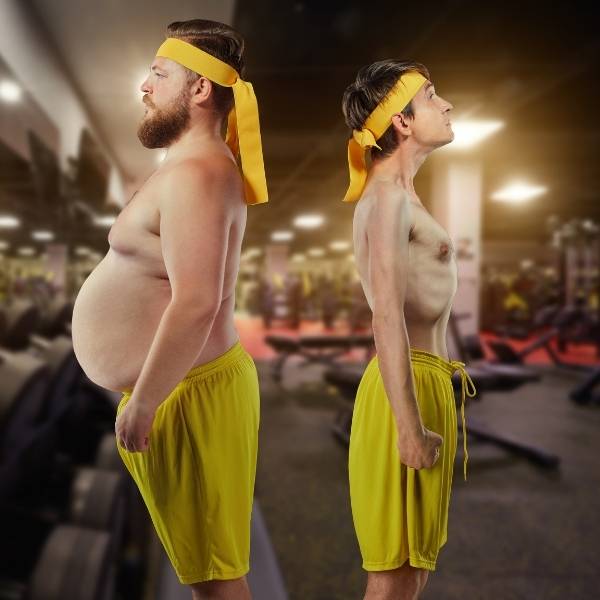
I bet you have a feeling about how we’re going to answer this one. Yep: it depends on a few different factors. However, in general, people can see 12–15 pounds of muscle gain in three months if they’re diligent about following their program.
What Factors Come Into Play?
Similar to how fast you can gain muscle, your body, program, and commitment will all play a part in how much muscle you can gain.
Also, again, your genetics will play a role. If you come from a line of people who tend to be naturally muscular, you likely won’t add as much as someone who comes from a family that’s less so.
Your skeletal structure is also a factor. If you have larger bones, you’ll get physically bigger than a smaller person because you have a larger frame, to begin with. Conversely, if you’re smaller, you won’t be able to gain as much muscle as someone bigger than you. However, everyone absolutely can reach their personal maximum muscle growth.
Can You Calculate Expected Muscle Growth Before Beginning Training?
Possibly. Certain factors, like your genetics and skeletal structure, aren’t changeable and are challenging to assess, especially without a professional. However, if you have an example of someone who lifts with a similar build and background as you, you may be able to use them as a guide for much muscle you can gain.
It’s important to note that everyone’s body and lifestyle is completely different. So while you may be able to use them as a guide, don’t try to promise yourself you’ll look exactly like them in exactly the same time frame. It’s better to develop a SMART goal and work toward that than try to predict your future muscle growth.
Let’s Eat: the Nutrition You Need to Build Muscle
Okay, you know how much you need to exercise to build muscle fast and naturally. Now it’s time to dig into the nutrition that will help you reach your goals. We’ll cover what you need to eat, how much of it, and when.
What Foods Should I Eat to Bulk Up?
Generally, the fitness world splits foods into three groups called macronutrients, or nutrients your body needs in large amounts: proteins, carbohydrates, and fats. Some athletes stop there and simply track their macros and let their micronutrients (what your body needs in smaller amounts, like vitamins) handle themselves. Others track both plus their caloric intake.
However you decide to run your program, here’s what you need to know about the macronutrients.
Protein
Arguably, protein is the most essential macronutrient for building muscle. Remember earlier when we talked about amino acids? Those building blocks for protein and how they work to help build muscles? There you go.
Protein also helps with tissue structure, is part of your body cell’s membranes, plays a role in your hormones, and helps regulate your metabolism. Getting enough protein is vital for general health as well as packing on muscles.
We already mentioned that you should be getting 1.2–1.7 grams of protein per kilogram of body weight (0.5–0.8 pounds) per day. Protein powder is an excellent way to add this essential nutrient to your day. However, try to prioritize getting enough from your diet.
Here are good sources of lean protein:
- Lean meats like chicken and turkey
- Vegetarian options like tofu, tempeh, and seitan
- Legumes (beans, peas, and lentils. Edamame is particularly good for you, as it’s one of the few foods that naturally contains all nine essential amino acids our bodies need)
- Dairy products and eggs
- Quinoa
Aim for at least 20 grams of protein at each meal. Prioritize protein in your snacks with things like raw mixed nuts, hummus, and vegetables, or cheese and whole-wheat crackers.
Carbohydrates
Simply put, carbohydrates are the main energy source for our bodies. Carbs get stored in our muscles and liver as glycogen. When you exercise, your body taps into these glycogen stores to fuel your workout.

So while protein is essential for building muscle, carbs are essential for giving you the energy you need to complete a solid workout. Eating a balanced meal of carbs and protein right after you’re done exercising is the ideal time to maximize glycogen storage.
In the fitness world, carbs and fats seem to trade off which one is the villain of the day. There’s also endless research that debates which one you should restrict or add more to various fitness goals.
For building muscle, you absolutely need to be consuming adequate carbs. Most major health organizations recommend getting anywhere from 45% to 65% of your daily caloric intake from carbohydrates.
So, say you’re eating approximately 2800 calories per day (we’ll dig more into calories below). That means approximately 1260 calories should come from carbs. 4 calories of carbs equal 1 gram, so you’re looking at around 315 grams of carbs per day.
Not all carbs are created equal, however. You need to prioritize complex carbs, which means whole grains. They’re typically higher in fiber and break down more slowly into your bloodstream, reducing energy crashes.
Here are some excellent sources of complex carbs:
- Whole wheat breads, muffins, tortillas, etc.
- Brown and wild rice grains
- Quinoa (double whammy with protein and carbs here)
- Legumes (ditto)
- Sweet potatoes, peas, and other starchy vegetables
Try to divide up your necessary daily carb amount between your meals and snacks. Avoid simple carbs like white bread and potatoes.
Fats
Fats go in and out of style in the fitness world, but the truth is, they’re an essential macronutrient and need to be included in your diet.
While your body mostly turns to carbs for energy during workouts, lower intensity activity, or ones done for a long time, draw energy from fats. Fats turn into lipids in the body and get stored in fat cells. 1 gram of fat actually has more than double the energy of 1 gram of carbs.
Like carbs, not all fats are created equal. They’re divided into four kinds:
- Saturated fats: these are unhealthy fat that, when consumed in excess, can raise your cholesterol. You find them in hydrogenated or partially hydrogenated oils, butter, and fatty cuts of meat
- Unsaturated fats: these protect the heart, regulate insulin sensitivity, and manage your energy levels. You find them in avocados and olive oil.
- Polyunsaturated fats: these include omega-3s and omega-6s. They support your hormones and cell membranes. You find them in flax seeds and salmon.
- Trans fats: the least healthy fat. It’s similar to saturated fats in that it can raise your cholesterol. You also find it in hydrogenated or partially hydrogenated oils like corn or soy oil.
Health organizations recommend that fat makes up anywhere from 20% to 35% of your daily calories. So, using the same formula as carbs, that’s 560–980 calories from fats. There are 9 calories in 1 gram of fats, so you’re looking at 62–108 grams of fat in your daily diet.
Here are some sources of good fats:
- Raw nuts and seeds
- Avocado
- Fish like salmon or sardines
- Olive or coconut oil (in moderation)
- Ghee oil for high-heat cooking (high heat turns olive oil into a saturated fat)
Just like with carbs, divide up your daily caloric allotment of fats into your meals and snacks.
How Many Calories Do I Need to Build Muscle?

You’ve got the breakdown of your macronutrients. Now let’s talk about how many total calories you need to build muscle so you can calculate your own personal macros and get started on developing your diet.
Remember that you need to be in a caloric surplus to build muscle. Once again, there is no one simple answer to tell you how many calories you should be consuming.
However, the general guideline is to eat at least 2500 calories per day. If you want even more intense hypertrophy, add an additional 45–50 calories per kilogram of body weight.
Your best bet is to consult your doctor or a personal trainer to establish exactly how many calories you need per day to reach your specific goals. They will consider all the various factors at play, including your age, gender, body composition, workout program, and goal.
Another important thing to note: what you eat on your rest day matters just as much as your workout days. Just because you’re not lifting doesn’t mean you should skip meals or restrict your calories. Remember, the work of repairing muscle tissue is done mostly on your rest days. Fuel that work with the same care as your lifting days.
What to Eat Before a Workout
Like everything else in the fitness world, there are a lot of differing opinions about this. Some people swear by fasted exercise, where they work out first thing in the morning, before eating. Others will die on the hill of fueling yourself before you lift.
Figuring out what to eat before your workout is probably going to be trial and error for you. However, general guidelines say a meal or snack made mostly of carbs and protein is a good idea. Some options include whole-wheat toast with almond butter, an apple, peanut butter, or an omelette filled with starchy veggies and cheese.
If you eat a small snack, wait at least forty-five minutes to an hour to do your workout. If you eat a large meal, wait at least two hours before starting. This gives your body time to break down the food and helps avoid stomach upset.
What you drink before your workout matters, too. Water is the purest choice. If that’s boring to you, consider adding a low calorie, zero sugar flavor packet. Or, even better, soak cut up fruit in your water overnight for a natural flavor boost.
You likely don’t need a fancy sports drink full of electrolytes unless you’re exercising for hours and hours (which you shouldn’t be if you’re lifting weights). Those drinks are also
usually high in sugar. Stick to naturally sweetened water for best results.
What to Eat After a Workout
Arguably more important than what to eat before a workout is what to eat after. Your body needs nutrients to replenish the ones it spent during your exercise.
Once again, proteins and carbs are an excellent option. Try to eat a high-protein, high-carb meal within 45 minutes of finishing your workout. Also, include a small serving of healthy fat for a balanced snack or meal.
Examples of solid choices to eat post-workout are turkey wraps made with whole wheat tortillas and veggies (bonus points for using avocado as your condiment), low-fat Greek yogurt with berries and granola, or smoothies made with fresh fruit, raw nut butter, protein powder (optional), and flax seeds.
Avoid the temptation to simply drink a protein shake—no matter how complete it claims to be—instead of eating a balanced meal. Like we said in the supplements section, protein powders have their place as useful additions, especially if you have unique protein requirements or struggle to get enough.
However, protein shakes aren’t usually meant to be substitutions for complete meals. Getting your nutrients from whole, healthful, natural ingredients is always the best way to fuel your body.
Wrapping Up
Hopefully, by the end of this article, you’ve learned:
- To set a SMART goal to guide your muscle-building journey
- How to lift heavy and make progress
- To prioritize proper form, your mind-muscle connection, and rest days
- What the right foods are for building muscle and to eat them consistently
- How to organize your nutrition around your workouts
Building muscle and getting stronger is a common fitness goal for a lot of people. The science behind it is constantly changing, so be sure to check back in every so often to stay as up-to-date on the latest news as possible.
Just be sure you’re getting your information from trusted sources. The fitness world is susceptible to trends and fads, just like any other industry.
Bottom line: train hard, train consistently. Eat well, eat consistently. You’ll be building muscle before you know it.
